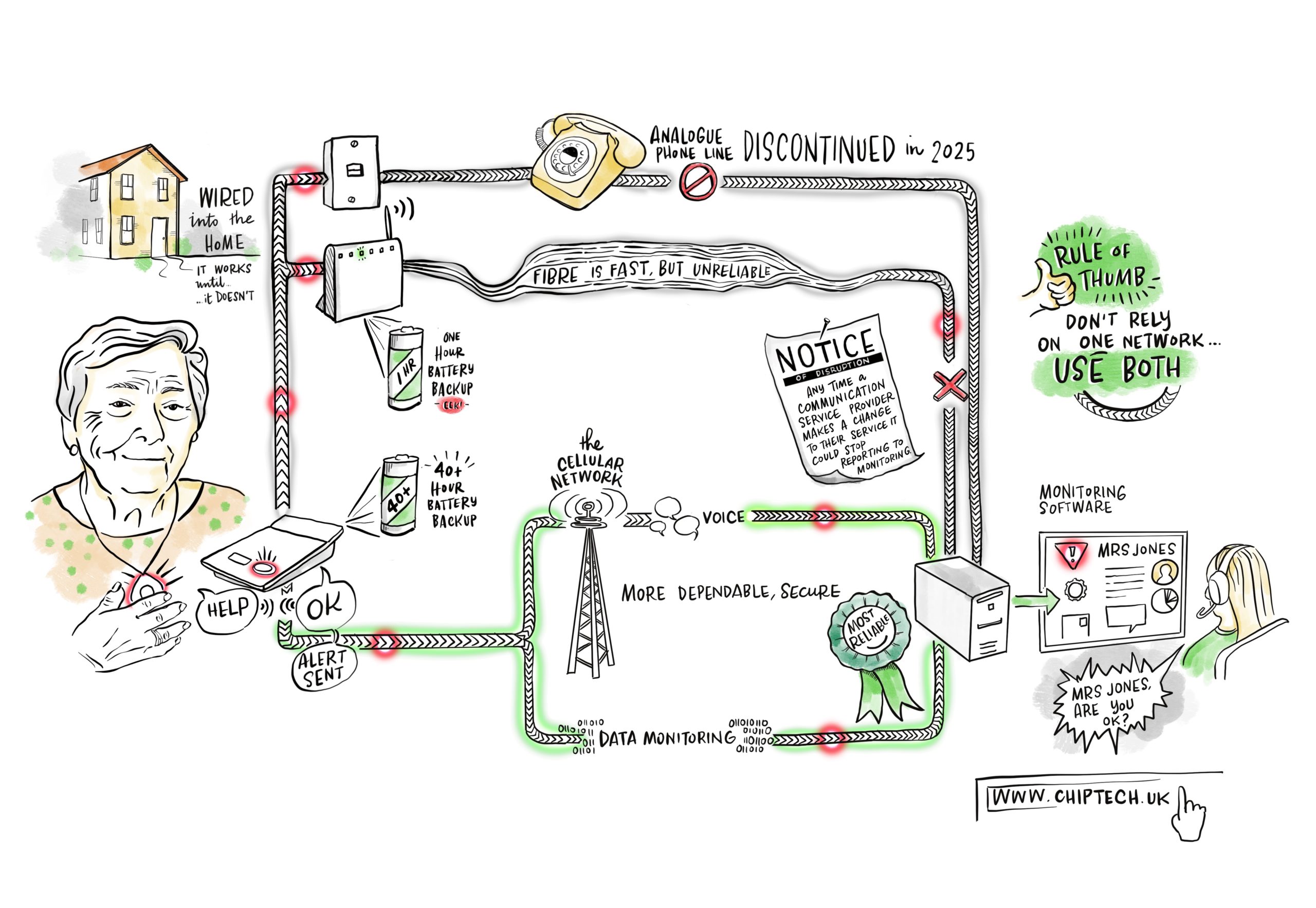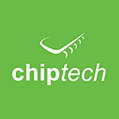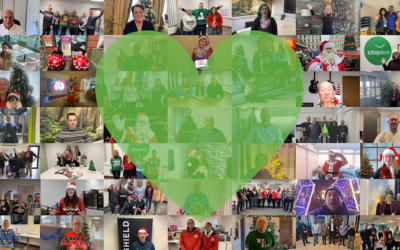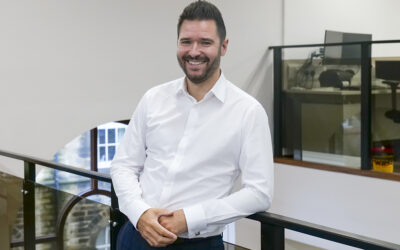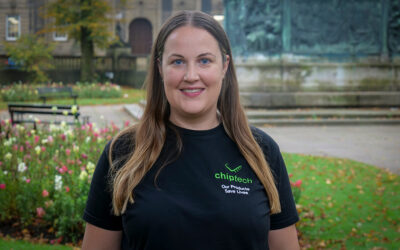The great digital communication migration is intended to be complete by December 2025, which is not that far away. British Telecom’s analogue systems have not really altered much in the last 40 years and have provided a great stable base for Telecare systems to rely on. The change from analogue to digital provides so much more and doesn’t have to be a daunting task – change is inevitable and needed. This migration from analogue to digital through B.T.’s Openreach rollout programme is happening, and there are many positives that can be attributed to it. This movement does not have to be a recessive one, with planning put into place regarding what a digital telecare future means, this can be a positive and rewarding transition. Chiptech can help you with this, we have been providing expertise in digital telecare systems since 2013 with the Australian wide digital migration and the partial changeover in New Zealand. We would like to share a few of our key learnings and get you on the right path to a successful digital migration.Analogue to digital fibre crossover can be problematic. Whilst using a personal telecare alarm, reporting a button press for help over a digital fibre network through to the ARC is inherently risky due to possible power supply issues. The risk is when there is a mains power outage, and the battery backup provided by routers with ATA Gateways, is only one hour. ATA Gateways are analogue telephone adapter devices, that act as a gateway and connect the analogue device through to a digital network.
Secondly, there are risks associated with the timing and distortion delays of the signal over the older analogue network using modern fibre and an ATA device. The DTMF tones get distorted and delayed between the two networks and can be unreliable. In addition, the ATAs required to bridge between the old and new digital fibre networks, are only a temporary fix that may provide some prolonged use of older analogue devices without any guarantees of how long it will be. The risks of power supply along with signal timing/distortion delays can be mitigated, by having multiple pathways on alternative cellular networks, and a backup internal battery that lasts 40 + hours in case of a mains power outage. Chiptech has tried and tested technology that is able to do this. The technologies used now and in the future need support and echo the fundamental values of caregiving and receiving care. This statement summarises Chiptech as an entity. With this in mind, we have already developed full digital systems and the technology is futureproof! With 200k + devices produced by Chiptech, we have established the means to make the analogue to digital migration easy and low risk.
Cellular communication networks were an obvious choice for Chiptech to utilise with our designed, manufactured and supported technology. Simply put, SIM cards are provisioned and managed by the provider. SIM cards are not affected by the changes that end user may make to communications provisions in the home. In fact, most people in the UK are using these cellular networks daily with their mobile phones. These are familiar systems, but just not in the context of the telehealth care sector yet. In the UK on average, each home has 8.3 connected web devices, by 2020 this is predicted to rise to 29. This shows that people are more than comfortable with digital and internet infrastructure technology in their lives. This has coincided with a recently improved mobile network coverage and advances in algorithm use.
Unfortunately, in the modern world there are many people that are isolated from human interactions leaving them lonely and vulnerable. Also, recent research has shown that, isolation and loneliness are as damaging to your health as smoking 15 cigarettes a day. This is where digital technology can actually help to alleviate this burden; the devices are more discrete, smarter, mobile, reliable and effective. This inspires freedom, confidence and stability for this person. “…digital technology can add years to life and life to years.” (TSA – A Digital Future for Technology Enabled Care). Safety and security are paramount to a person’s wellbeing and can be achieved by encouraging people to go out and about knowing that help is just a button press away. This encourages human connection and involvement with a person’s family, friends and community. It also allows people to independently stay at their chosen home longer rather than the alternative of being moved into a care home facility. This is a win/win person focused solution for everyone! Furthermore, the option of using domestic roaming SIM cards over a cellular network makes installation much easier which also saves time and resources for the supplier and/or client.
- Test benches are effective for confirming telecare base unit reporting at the time of testing. However, there are approximately 640 Communication Providers (CP) in the UK, and this large number creates issues with the variation in service quality, installation, and in reporting reliability over time.
- A streamlined communication pathway test is essential on each device to ensure all available connections are functioning as expected.
- Developing a plan for replacing products, managing the changes for all staff processes, SIM card management and changing Alarm Receiving Centre (ARC) infrastructure, are all important steps to ensure a seamless and safe transition to digital.
- 1.7 million people, as it stands now, will be affected directly by this change from analogue to digital.
- Risks are increased if one doesn’t adapt to the change before it happens – this is an opportunity to get it right. The longer it is left and closer to 2025 the greater the risk and the greater the number of failures.
- Digital is on average ten times as fast – so when you need help it will take four seconds for help to answer your call not 40, the choice is obvious.
Telecare is going to forever change in the UK, so if you are involved in this sector then you need to be planning for a very different world. Everything connected to this will also change. The most essential of these adaptations for the digital world include; an infrastructure change, staff training and upskilling, management, testing, monitoring centre software adaptations and testing, SIM card management, network testing, device switching not to mention end user changes. Chiptech has detailed digital experience and knowledge, and we can help you make the great digital migration a smooth one by 2025.
So, now that you have something to think about, the question is, are you digital ready?
